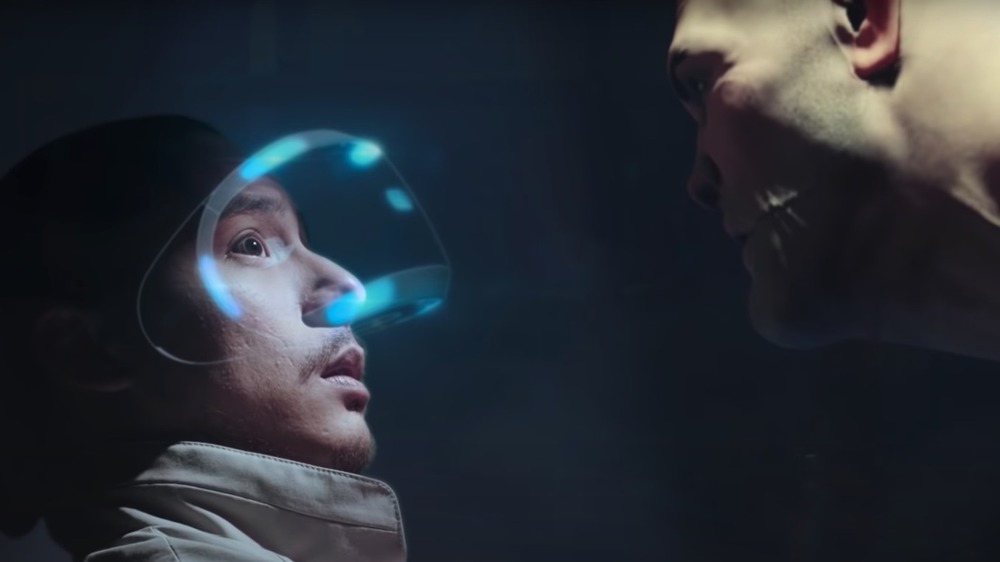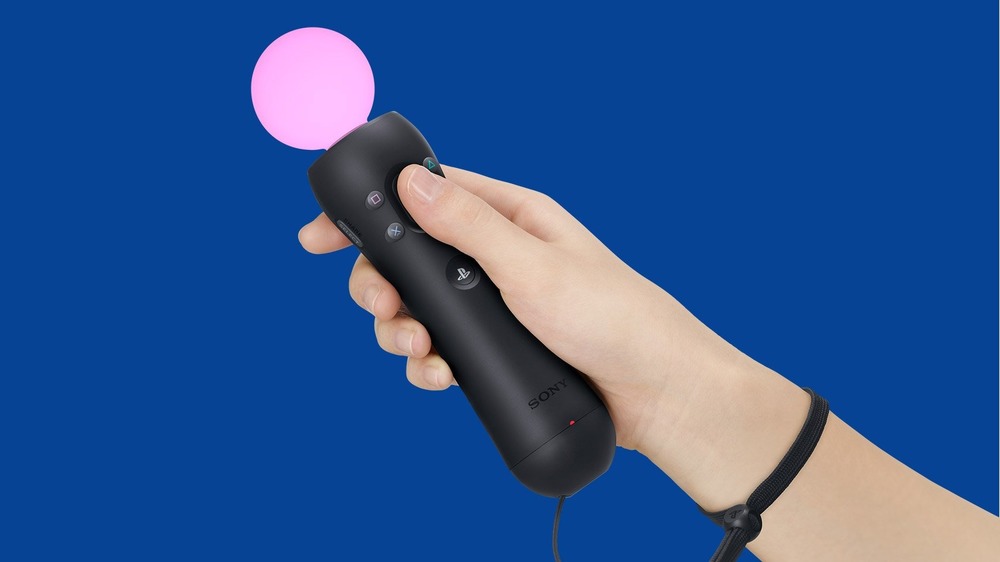New Features We Want To See From Sony's PSVR 2
In March 2019, PSVR sales surpassed 2.4 million units. Considering Sony's success with VR gaming, some may wonder why the company has not yet released a new headset that's designed for the PlayStation 5. For all you virtual reality enthusiasts, there's good news: a new form of PSVR is on its way to the PS5.
If you have been disappointed by the bizarre way Sony is supporting PSVR on PS5 (by making fans request an adaptor for their existing PSVR headsets), you can finally rejoice — although you will need to remain patient. According to the PlayStation Blog, there's a long road ahead for the project, so consumers won't be seeing the new device this year. However, with promises of "dramatic leaps in performance and interactivity," it could be worth the wait.
Some of the new upgrades and features that have already been teased include a streamlined one-cord setup, higher resolution, deeper field of view, a new controller, and improvements in tracking and input. While Sony has offered fans a tease regarding some general improvements to PSVR, there's still plenty of room for speculation. Here are some of the new features that should be implemented with the PSVR 2.
PSVR 2 needs room-scale tracking for a more immersive experience
Room-scale tracking is a key feature that needs to be integrated into the next PSVR headset. According to Cognitive3D, "VR is not the same without room scale."
Instead of having everything fixed at the same distance from your eyes, room-scale tracking takes the experience of virtual reality to the next level by allowing the user to move freely within the emulated space. Such immersion is measured in "Degrees of Freedom," or DoF.
With 3DoF headsets, head movements are represented, but not body movements. If you move your whole body forward, instead of coming closer to an object, the whole room moves with you. Current PSVR technology only offers 3DoF movement. Headsets equipped with 6DoF, on the other hand, allow you to actually walk closer to an object without bringing the entire room along with you.
Wired rated PSVR as a "basic VR" headset, citing its ties to PlayStation as its only true advantage. The current PSVR operates through the use of tracking lights emitted from the headset and PS Move devices. VentureBeat suggested this was done to take advantage of Sony's older PS Move technology. With the PlayStation 5 offering a fresh slate of new titles and customers, perhaps Sony can create a truly immersive experience that brings PSVR beyond the "basic" labeling.
Sony should bring haptic feedback and adaptive triggers to PSVR 2
Without going into details, the announcement on PlayStation Blog promises the new VR control pads will have "key features found in the DualSense wireless controller." While there are quite a few innovative tricks packed into the DualSense, such as the Create Button, two of its signature immersive features are haptic feedback and adaptive triggers. Considering the fact that these advances offer users a more tactile gaming experience, it seems logical that both would be integrated into PSVR 2.
Soon after the historic PlayStation 5 launch, LetsGoDigital leaked a patent that could shed some light on the possibility of VR with haptic feedback integration. Although LetsGoDigital (via Google Translate) suggested that this sensory feature will be used to "provide the user with additional information regarding wearing comfort," one has to wonder if it will have any other application.
With haptic feedback and adaptive triggers integrated into the PSVR 2 controllers, the line between virtual and reality could be blurred even further. Whatever new features do wind up in the new VR controllers, hopefully they won't be plagued with the dreaded PS5 controller drift.



